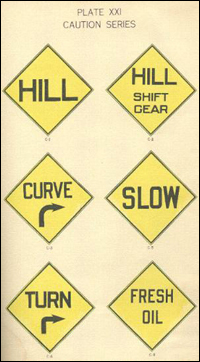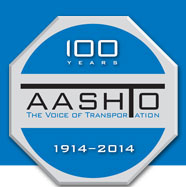
September 19, 2013
Did You Know?

In addition to the need for a uniform system of highways, the American Association of State Highway Officials also found itself in the 1920s grappling with the growing importance of improved and consistent traffic control devices for many of the nation’s roads as highway mileage and the number of automobiles continued to expand.
In 1927, the association released the Manual and Specifications for the Manufacture, Display, and Erection of U.S. Standard Road Markers. That document, which focused on rural roads, was the first national guidebook when it came to addressing standardized sign shapes and colors.
Due to this, the Manual on Street Traffic Signs, Signals, and Markings was released in 1930 to set forth similar standards for roads in urban settings. Then, for the sake of even more consistency and not having to deal with two separate documents for rural and urban environments, AASHO subsequently worked with the National Conference on Street and Highway Safety to develop a single standard for all highway settings. The result was the Manual for Uniform Traffic Control Devices for Streets and Highways (MUTCD), which made its debut in 1935 and established road standards for both signs and pavement markings. There have been eight more editions of that edition published since then to take into account various changes relating to usage, size, and advances in technology.
Finally, as part of the 1966 Highway Safety Act, federal transportation officials incorporated by reference the provisions of the MUTCD in its entirety for uniform standards for the states. On a worldwide scale, the MUTCD has also influenced the design and use of signs in such locales as Ireland and Australia.












